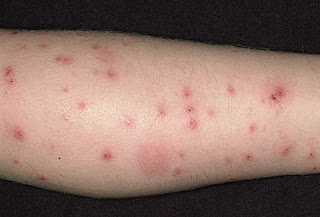 |
| Get Rid of Acne Infection Forever |
Get Rid of Acne Infection:
Most people will have to deal with acne at some point or
another, with many people having to deal with it to a significant degree for a
significant period of time. What's worse, many of the over-the-counter remedies
for pimples do more harm than good. However, you shouldn't let that discourage
you from your search for good, natural home remedies for acne.
Are you worried about your acne infection? Are you still
concerned about your facial skin? Is your flawed skin tone starting to bother
you way too often? If the answer to even a single question is 'yes', it's time
you read this article with care.
To know about type of acne: Different Type Of Acne Scars
To know about type of acne: Different Type Of Acne Scars
Get Rid of Acne Infection Tips:
1. Keep Your
Face Oil Free:
Blemishes are known to strike at will. Especially if you are
a teenager, the chances are that you may be suffering from either blackheads or
whiteheads. To be able to get rid of acne infection , you would be required to cleanse
your face with fresh water and mild soap. You simply need to remove the excess
oil from your face.
2. Make Use
Of A Face Pack:
Pollution and stress play a major role in aggravating the
acne infection. In order to remove the pollutants from the surface of your
facial skin to get rid of acne infection, you simply need to apply a face pack, preferably a fruit facial,
on a weekly basis. Likewise, you can try and soothe your mind by listening to
soft music.
3. Apply An
Anti-Acne Cream:
There are plenty of anti-blemish supplements available in
the market today. In order to avoid the occurrence of whiteheads and
blackheads, you need to try and apply an anti-blemish cream on a regular basis.
These creams are readily available through an online store. Simply place an
order and the cream of your choice would be delivered to your doorstep.
4.
Some people recommend an apple cider vinegar
facial application. You simply do a 50/50 mixture of filtered water and apple
cider vinegar. Be careful not to apply too much to your face, as vinegar is a
drying agent.
5.
Some
people use sour cream and strawberries on their faces. You simply mix them and
you have a nice weekly facial paste.
6.
Cucumbers
are a classic for skin health. Cucumbers soothe irritated skin and help to keep
it from drying out. You simply cut slices out of the cucumbers and apply them
for about a half hour to any irritated skin.
7.
Green
tea bags are a popular natural home remedy for acne. You can drink your green
tea and then rinse the tea bags in cold water for use as a half-minute acne
application.
8.
Honey
masks are thought to be natural home remedies for acne and other infections of
the skin. It's not known how it works exactly, but many people believe in it
enough to put it all over their faces twice per week.
9.
Garlic,
as you might expect, is commonly used as a natural home remedy for acne. It's a
natural antibiotic and has properties that repair and even reduce acne
breakouts. Apply fresh garlic to areas where there is acne. Few things get more
positive testimonials than garlic. Use this acne natural remedy at bedtime if
you'd rather not be walking around during the day smelling like garlic.
10.
Rosewater
is among the more surprising natural remedies for acne. Two to three washes in
rosewater daily is worth a try if you want healthier looking facial skin.
11.
Tea
tree oil may be directly applied to acne to get rid of acne infection. Unlike many of the other directly
applied natural home remedies, tea tree oil will leave your skin with a nice
moisture balance.
To Know more: How to Get Rid of Acne Scars Fast in Natural Way















